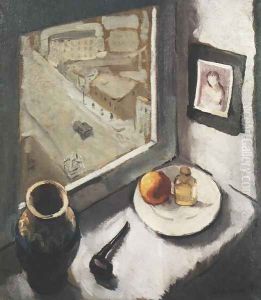Efraim and Menasze Seidenbeutel Paintings
Efraim Seidenbeutel and Menasze Seidenbeutel were twin brothers born in 1903 in Warsaw, Poland. They were Jewish painters who became well-known figures in the interwar Polish art scene. Their work was greatly influenced by the atmosphere of their hometown and the rich cultural life of Jewish Warsaw. From a young age, they were both passionate about art and showed great talent, which led them to study at the Warsaw Academy of Fine Arts. There, they were students of some of the most prominent Polish artists of the time.
The Seidenbeutel twins were active members of the Jewish artistic community in Warsaw. They were part of the group 'Jung Idysz' (Young Yiddish), a collective of Jewish artists, writers, and intellectuals who sought to create a new, modern Jewish culture that was both rooted in tradition and looking towards the future. The twins' artwork often depicted scenes from Jewish life, biblical themes, and portraits. Their style was characterized by a blend of expressionism and symbolism, with a distinctive use of color and form that provided a unique interpretation of their subjects.
Efraim and Menasze's careers were tragically cut short by the outbreak of World War II and the subsequent Holocaust. During the war, they were confined to the Warsaw Ghetto, where they continued to create art as a form of resistance and as a way to document the harrowing experiences of life in the Ghetto. In 1942, they were deported to the Majdanek concentration camp, and later to Auschwitz, where they were both murdered in 1945, just before the end of the war.
Despite the brevity of their careers, Efraim and Menasze Seidenbeutel left a lasting impact on Polish art. Their works are held in various collections and continue to be exhibited posthumously, serving as a poignant reminder not only of their talent but also of the rich cultural world that was destroyed during the Holocaust.
